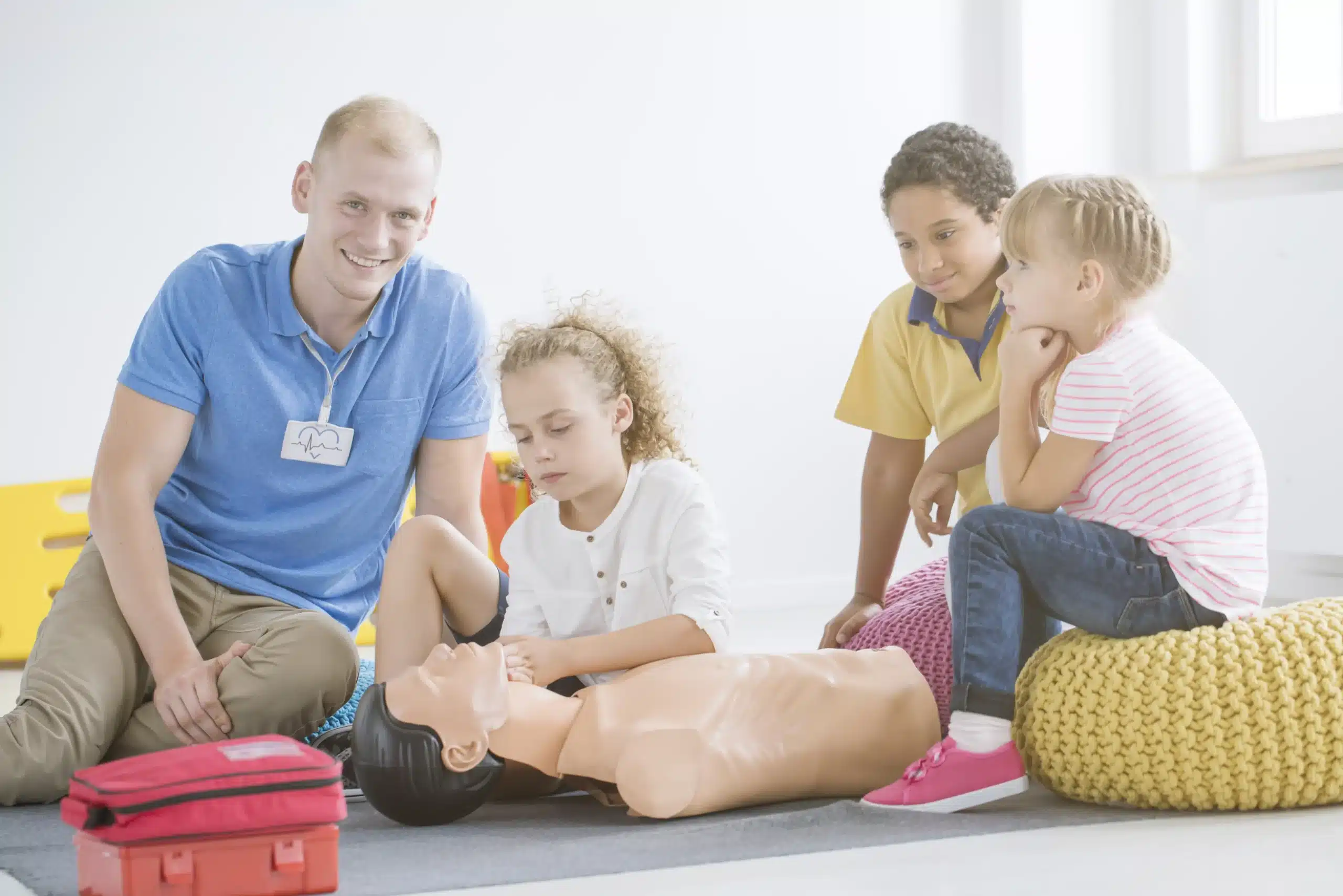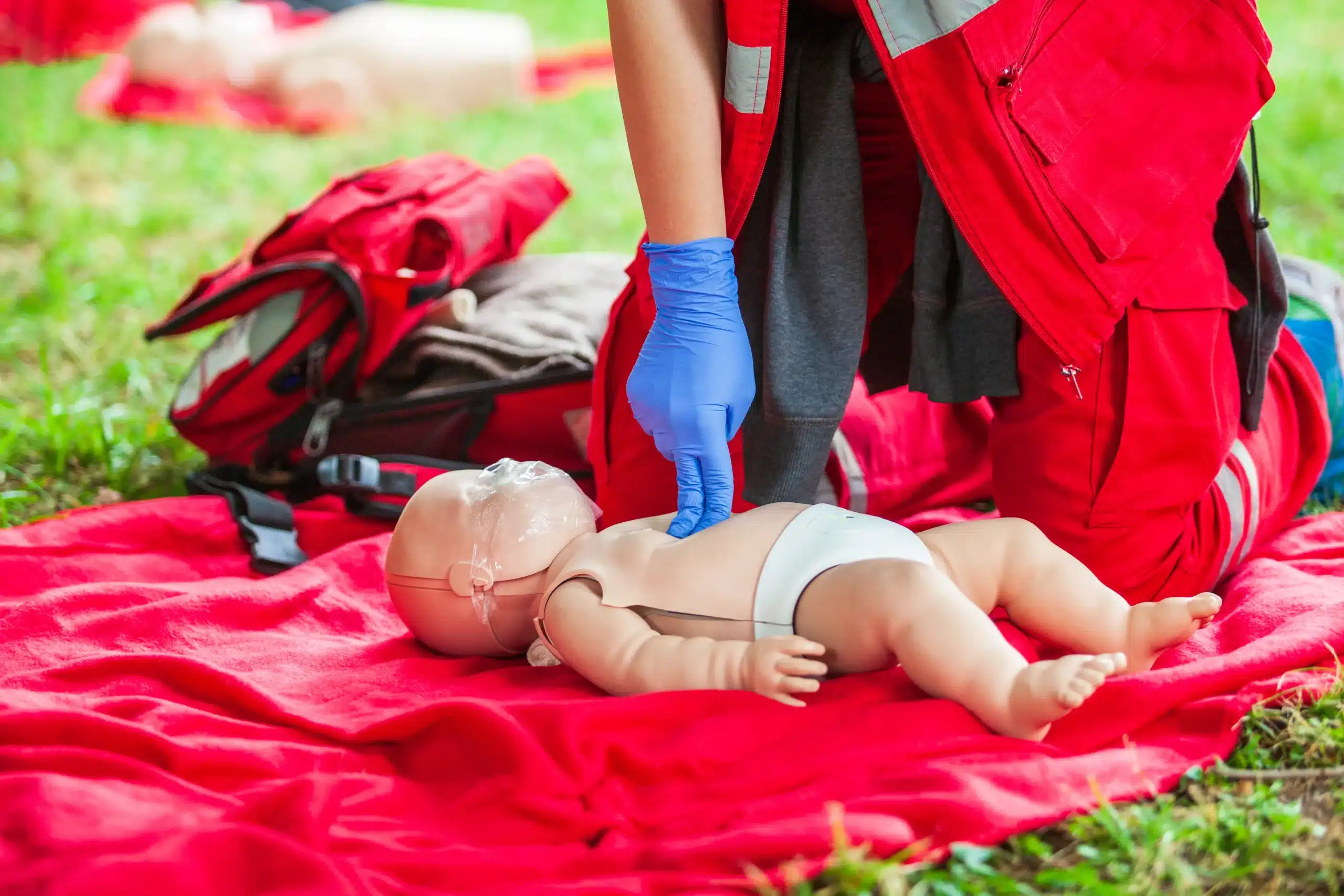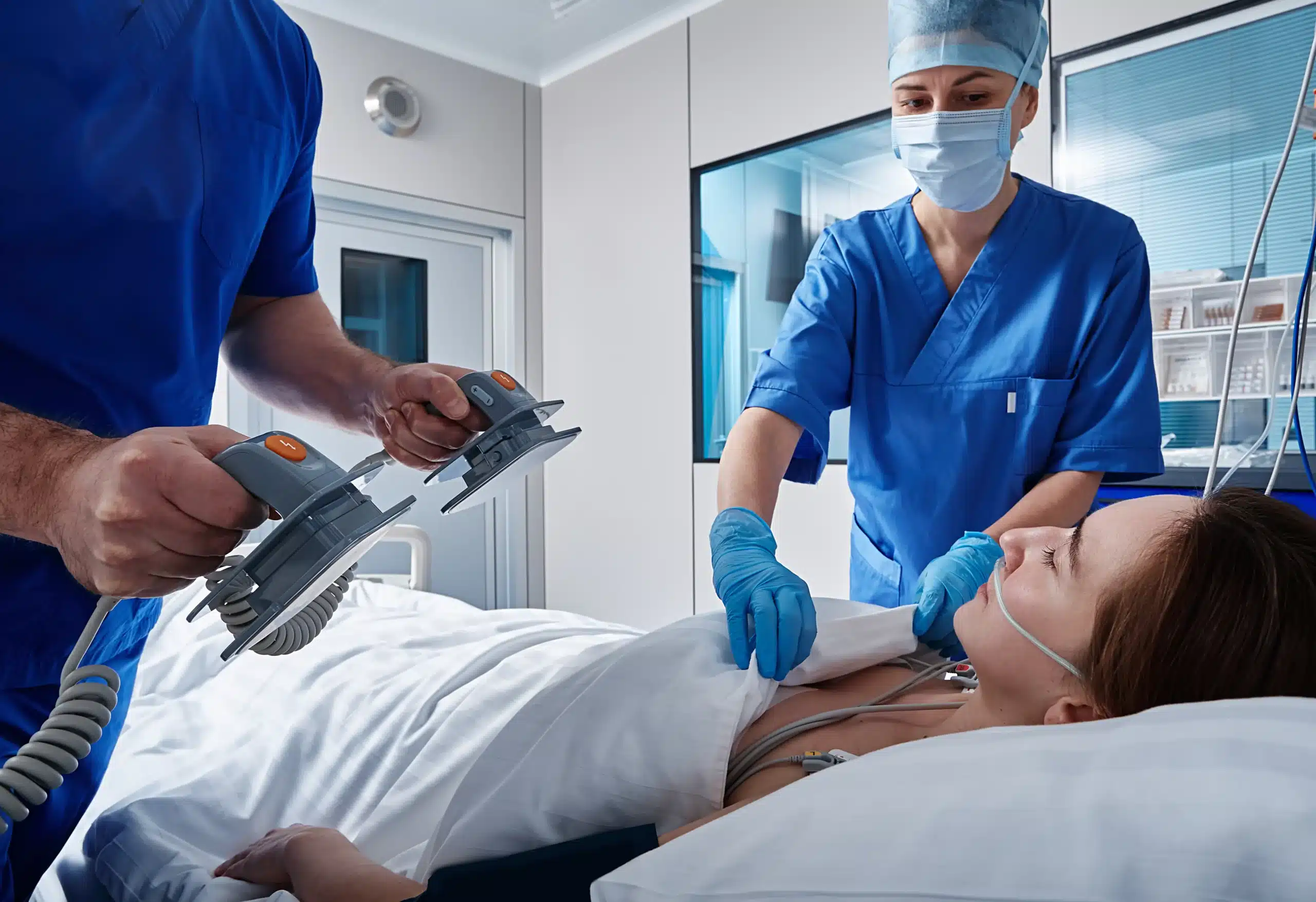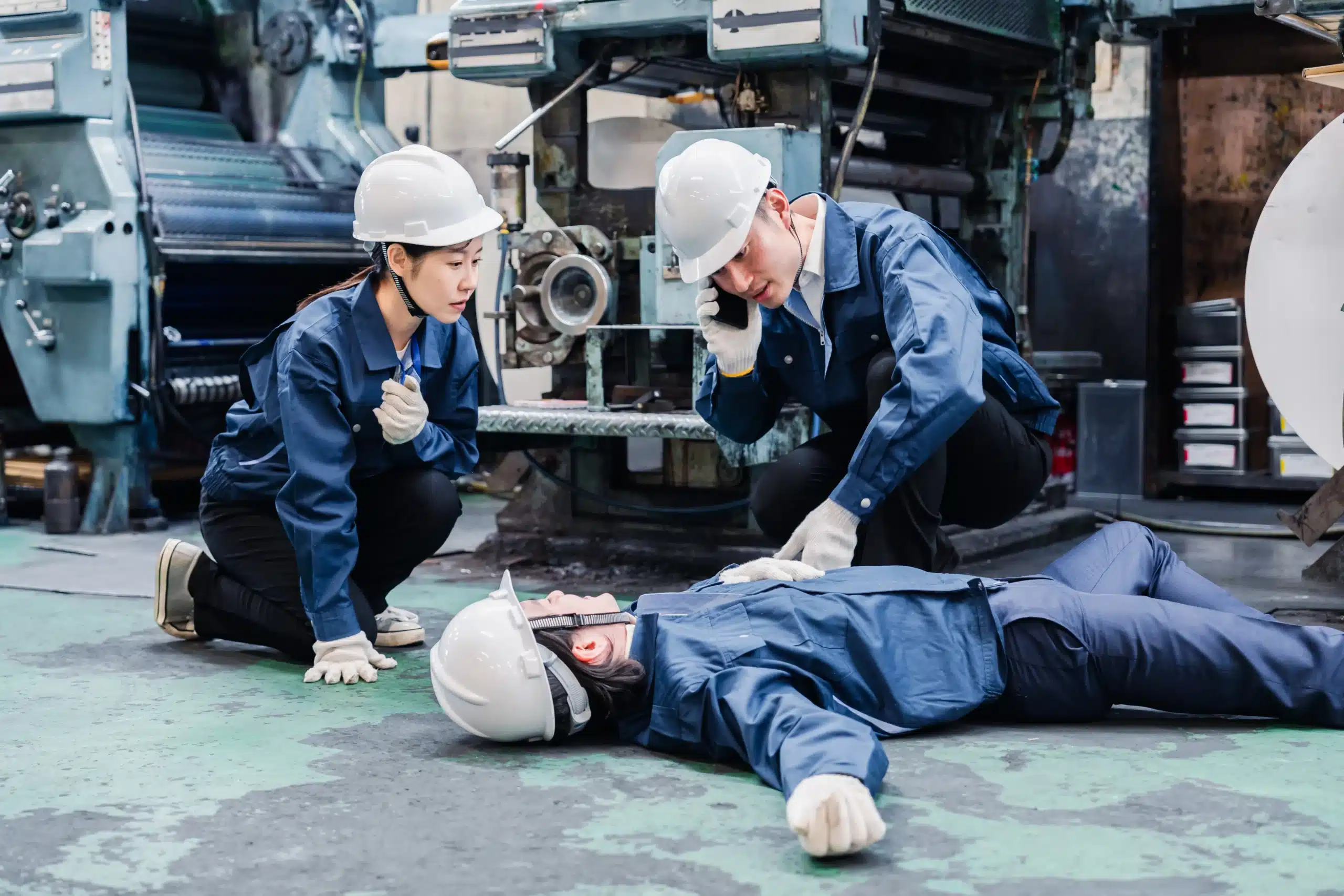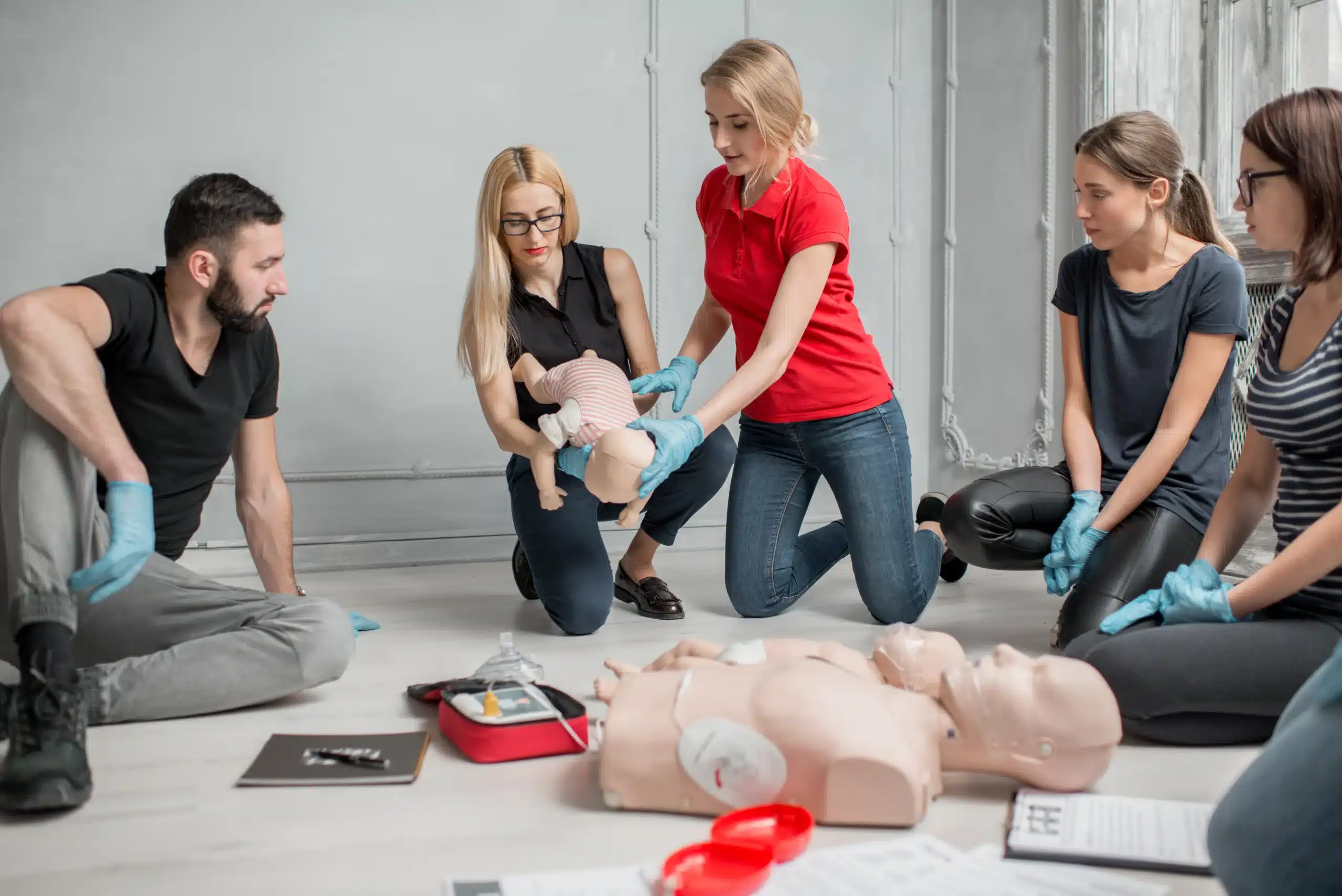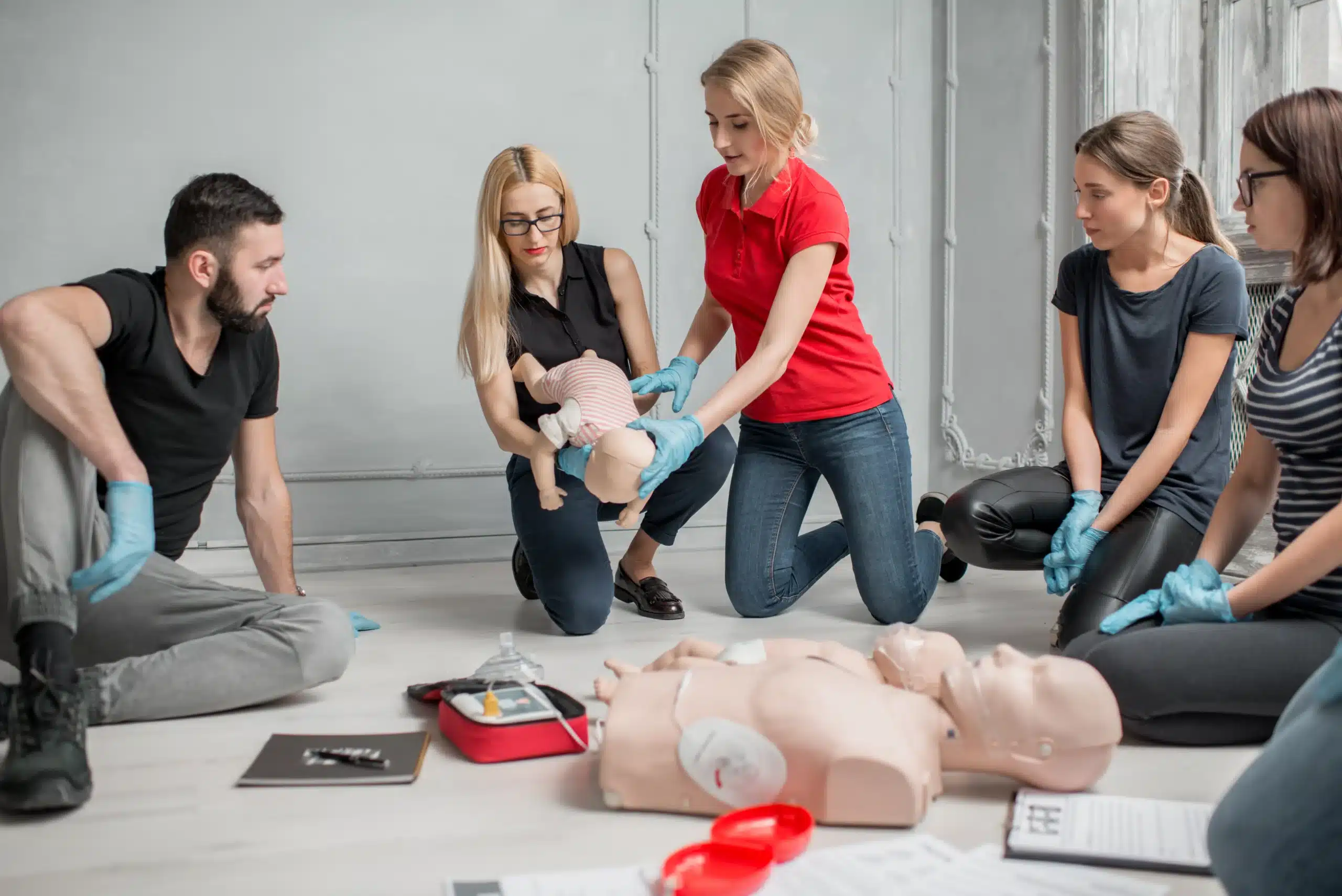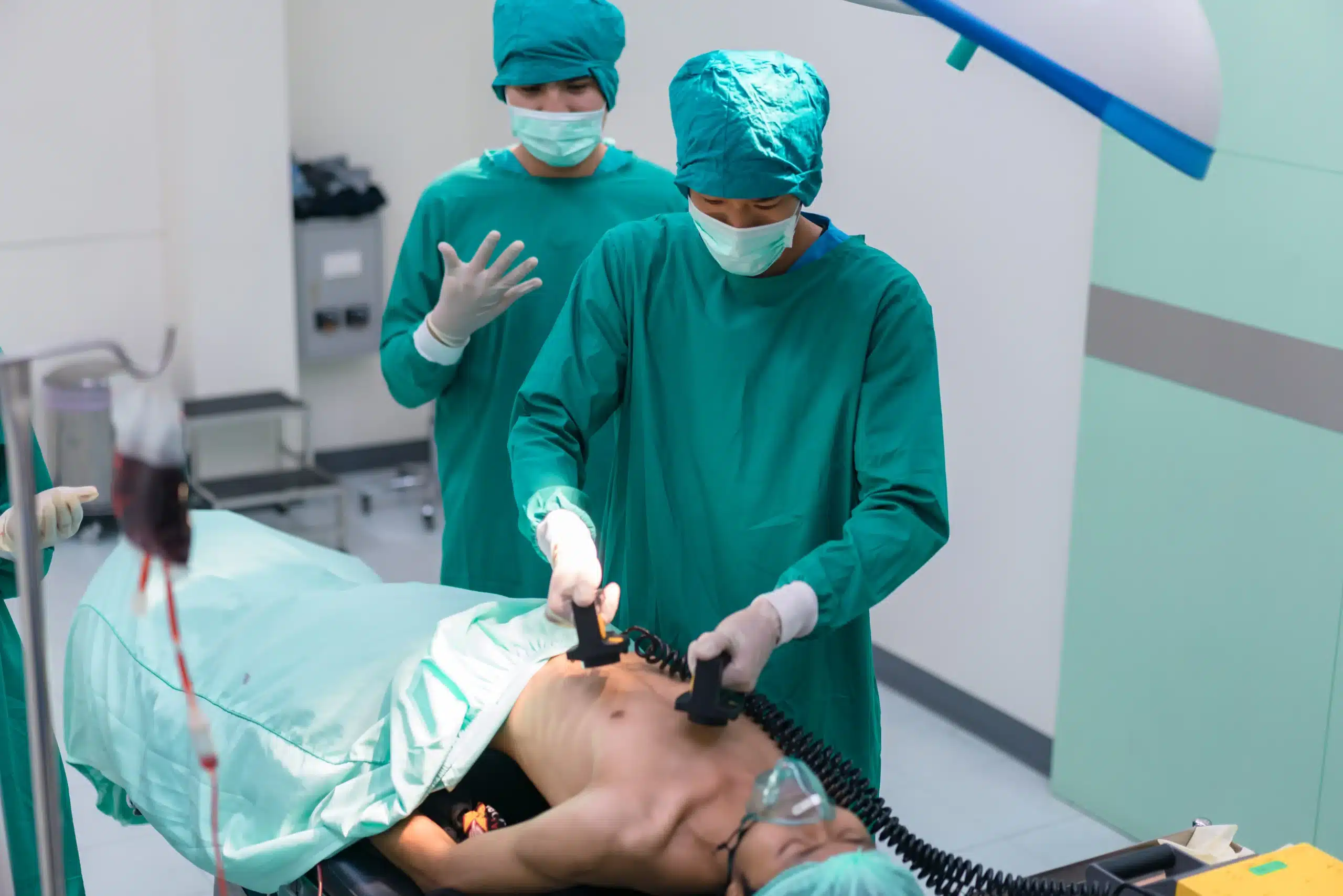Working in healthcare in San Jose means being ready for anything. From routine check-ups to unexpected emergencies, you need the skills to handle any situation. That’s where Basic Life Support (BLS) for healthcare providers in San Jose comes in. BLS certification equips you with the essential tools to respond effectively to life-threatening emergencies, giving you the confidence to provide critical care when it matters most. This training goes beyond just CPR; it covers a range of life-saving techniques, from using an AED to managing airways. Whether you’re a seasoned healthcare professional or just starting your career, BLS certification is a vital asset in San Jose’s dynamic healthcare environment. This post will cover everything you need to know about BLS for healthcare providers in San Jose, from course content and certification options to the profound impact it has on patient care and community health.
Key Takeaways
- BLS Certification is a Must-Have: It provides healthcare professionals with essential skills like CPR, AED use, and airway management, increasing confidence and competence in emergencies. This training directly impacts patient outcomes and ensures you meet regulatory standards.
- Choose Your BLS Course Wisely: Consider the provider’s reputation, instructor experience, course flexibility, and overall value. Look for AHA-compliant training and explore potential discounts. The right course will fit your schedule and learning style.
- Invest in Your Skills, Invest in Your Community: BLS training is more than just a certification; it’s an investment in your ability to provide life-saving care. These skills benefit not only your career but also the well-being of your community.
What is BLS for Healthcare Providers?
Basic Life Support (BLS) for Healthcare Providers is a crucial program designed to give healthcare professionals the skills they need in emergencies. This training emphasizes recognizing cardiac arrest, performing CPR, and using an AED. It’s the foundation for high-quality patient care during life-threatening events. Beyond the technical skills, BLS certification instills confidence and empowers healthcare providers to respond effectively under pressure.
Key BLS Training Components
BLS certification covers essential life-saving skills. You’ll learn how to perform high-quality CPR for adults, children, and infants, including how to use an AED. The training also covers essential airway management techniques, such as how to relieve choking. These skills are practiced in a controlled environment so you can build confidence and proficiency. BLS courses also emphasize the importance of teamwork and communication during resuscitation efforts. This focus on clear communication and coordinated response is vital in real-world emergency situations.
Why BLS Matters for San Jose Healthcare Workers
BLS training is essential for providing efficient emergency care in any healthcare setting. Whether you work in a hospital, clinic, or other healthcare environment, having up-to-date BLS skills is crucial. For healthcare providers in San Jose, BLS training is especially important given the region’s large and diverse population. By having a solid foundation in BLS, healthcare workers can provide a critical first line of defense, stabilizing patients until more advanced medical help arrives. This rapid response can significantly improve patient outcomes. Furthermore, maintaining your BLS certification demonstrates a commitment to providing high-quality patient care and ensures compliance with regulatory standards. It’s an investment in the health and safety of the San Jose community.
Find Top BLS Certification Providers in San Jose
Finding the right BLS certification course is crucial for healthcare providers in San Jose. Here’s a rundown of reputable training centers and organizations offering BLS certification in the area:
American Heart Association (AHA)
The American Heart Association (AHA) sets the standard for high-quality CPR and BLS training. Their San Jose training center offers a range of courses, including BLS for Healthcare Providers, ACLS, and PALS. You can find AHA courses conveniently scheduled throughout the week, making it easier to fit training into your busy schedule. The AHA’s emphasis on evidence-based practices ensures you learn the most up-to-date life-saving techniques.
American Red Cross
The American Red Cross is another well-respected provider of BLS certification. They offer various course formats, including in-person classes and blended learning options that combine online coursework with hands-on skills sessions. This flexible approach accommodates different learning styles and schedules. Check their website for upcoming courses and availability.
Milpitas CPR Classes
Milpitas CPR Classes specializes in AHA-certified BLS courses designed specifically for healthcare providers. They offer comprehensive training that covers essential life-saving skills, including CPR, AED use, and airway management. Upon successful completion, you’ll receive an AHA BLS Provider card, valid for two years. Their convenient location serves Milpitas, San Jose, and Santa Clara.
Safety Training Seminars
Safety Training Seminars provides a variety of AHA-certified courses, including BLS, ACLS, and PALS, in nearby Milpitas. They focus on delivering high-quality training that equips healthcare professionals with the skills and confidence to respond effectively in medical emergencies. Their experienced instructors create a supportive learning environment.
Other Local Providers
Beyond these larger organizations, you can also find BLS certification courses through various local providers in San Jose. Organizations like AllCPR San Jose and the Emergency and Health Training Center offer targeted training programs. Research local providers to find a course that fits your specific needs and schedule. Make sure any provider you choose offers AHA-compliant training and certification.
Learn Essential BLS Skills
BLS certification goes beyond a credential; it equips you with practical, life-saving skills. This training empowers you to respond effectively to emergencies, giving you the confidence to act quickly and decisively.
Master High-Quality CPR Techniques
High-quality CPR is the cornerstone of BLS. You’ll learn proper techniques for chest compressions, rescue breaths, and how to recognize cardiac arrest. This hands-on training ensures you can deliver effective CPR, increasing the chances of survival. Developing proficiency in these skills allows healthcare personnel to perform life-saving procedures with confidence. Medicus Training highlights how BLS training builds essential skills like CPR, using AEDs, and airway management.
Use AEDs and Manage Choking
BLS training also covers using automated external defibrillators (AEDs). You’ll learn to assess situations quickly, operate an AED, and integrate it into the chain of survival. You’ll also learn how to manage choking emergencies in adults and children. These skills are crucial for responding effectively to various life-threatening situations, as highlighted by CPR Every Second Counts. Their insights emphasize how important hands-on training is for healthcare workers responding to cardiovascular emergencies.
Learn Basic Airway Management
Effective airway management is another critical BLS component. You’ll learn to open and maintain a patient’s airway, ensuring adequate oxygen flow. This includes techniques like head-tilt-chin-lift and using airway adjuncts. Mastering these skills is essential for providing optimal care during respiratory emergencies. The CNA Training Institute underscores the importance of basic life support training for healthcare professionals to manage crises and deliver excellent patient care.
Practice Teamwork in Resuscitation
BLS training emphasizes teamwork during resuscitation. You’ll learn to communicate and coordinate effectively with other healthcare providers under pressure. This includes understanding roles, clear communication, and coordinated actions for the best possible care. This collaborative approach optimizes patient outcomes and ensures a smooth, efficient response. CPR Every Second Counts explains how BLS training empowers community health workers to provide that crucial first line of defense, stabilizing patients until more advanced help arrives.
Choose Your BLS Training Format
Finding the right BLS training format is key to successfully completing your certification. Thankfully, there are several options available to fit your schedule and learning style. Let’s break down the most common formats: in-person and blended learning.
In-Person Classes
In-person BLS classes offer a hands-on learning experience perfect for those who thrive in a traditional classroom setting. These courses typically run for about four and a half hours and provide a structured environment to practice essential skills. You’ll work directly with an instructor and other students, allowing you to ask questions, receive immediate feedback, and build confidence in your abilities. This format ensures you’re well-prepared for real-life emergencies through supervised practice and demonstrations. If you learn best through direct interaction and hands-on training, an in-person BLS class might be the ideal choice.
Blended Learning
For those seeking greater flexibility, blended learning provides a convenient way to earn your BLS certification. This format combines online coursework with an in-person skills session. This approach lets you learn the theoretical material at your own pace, then demonstrate your skills in a practical setting. It’s a great option for busy healthcare providers who need to balance work commitments with their certification goals. The online portion often includes interactive modules, videos, and quizzes to reinforce learning. The Red Cross offers more information on blended learning and the distinctions between BLS and CPR certification.
Typical Course Duration
Most BLS certification courses take around three and a half hours to complete, whether you choose in-person or blended learning. This relatively short timeframe makes it a manageable commitment, even for busy professionals. More information on BLS course duration and pricing can be found on the Milpitas CPR Classes blog. Blended learning, in particular, offers a good balance between flexibility and hands-on training, allowing you to work through the online materials when it’s convenient and then schedule a shorter in-person skills session.
Evaluate BLS Certification Costs & Value
Getting your BLS certification is a smart investment, but understanding the costs and weighing them against the value is essential. Let’s break down what you can expect to pay for BLS certification in San Jose and explore why this training is so valuable.
San Jose Price Range
In San Jose, BLS certification courses typically cost around $70 for a 3.5-hour class. This is a worthwhile investment considering the skills you gain and the potential impact you can have. After completing the course, you’ll receive your American Heart Association BLS certification card, valid for two years.
Group & Student Discounts
Looking to train with colleagues or classmates? Many providers offer group discounts, making it even more affordable to learn together. Providers like AllCPR San Jose offer group discounts. Students can also find exclusive discounts on BLS CPR courses in nearby Milpitas. These discounts are often available for those enrolled in medical, EMT, or dental programs.
Invest in Life-Saving Skills
The value of BLS certification goes far beyond the price tag. This training equips you with the skills to respond confidently during cardiovascular emergencies. Think of it as an investment in your ability to provide life-saving care. From mastering high-quality CPR to using an AED and managing a choking victim, BLS training empowers you to make a real difference. These skills are not only crucial for healthcare professionals but also invaluable for anyone who wants to be prepared for an emergency. BLS training builds confidence and competence in performing essential procedures like CPR, using an AED, and managing airways. It’s an investment in yourself, your community, and the well-being of those around you.
Get & Renew Your BLS Certification
Getting your BLS certification is straightforward, and maintaining it is just as easy. This section covers everything you need to know about getting certified and recertifying in San Jose.
Initial Certification Requirements
BLS certification courses in San Jose come with varying price tags, often depending on the provider, the course format (online, in-person, or blended learning), and included materials. Shop around to find a BLS course that fits your budget and learning style. You’ll learn essential life-saving skills, such as CPR, AED use, and basic airway management. Upon successful completion, you’ll receive an American Heart Association (AHA) BLS certification card valid for two years. You’ll receive your card the same day you complete the course, so you’re ready to put your skills to use immediately.
Validity & Renewal Options
Your BLS certification is valid for two years. As your certification expiration date approaches, you’ll need to take a BLS renewal course. Healthcare providers must renew their BLS certification every two years to maintain their credentials and stay current with the latest guidelines. Renewal is a simple process. You can choose to renew your BLS certification online or in person, offering flexibility for busy professionals.
Overcome Recertification Challenges
One common mistake people make when recertifying is not reviewing the course material beforehand. Brushing up on the material will help you feel confident and prepared for the recertification test. By staying on top of your renewal and reviewing the material, you can ensure you’re always ready to provide high-quality care. This preparation will help you maintain proficiency in these essential life-saving techniques.
Select the Right BLS Course in San Jose
Choosing the right BLS course is a big decision. It’s an investment in your skills and can even impact your career. Here’s what to consider when making your choice in San Jose:
Check Provider Reputation
Look for a provider with a solid track record and recognition in the medical community. A well-established organization like the American Red Cross, with its century-long history of training first responders, offers BLS certification in San Jose and is a good example of a reputable provider. Their curriculum is consistently updated, giving you confidence in the quality of training. Also, check if the provider is an authorized training center for a recognized organization like the American Heart Association. This ensures the course meets nationally accepted standards. Our courses at Milpitas CPR Classes are AHA-compliant and we are an authorized AHA Training Center. You can find more information on our BLS course here.
Prioritize Course Flexibility
Your schedule is busy, so finding a course that fits your life is key. Think about whether you prefer in-person learning or if a blended online/in-person format would work better. The Red Cross, for example, offers this flexible approach to BLS training. Consider weekend or evening classes if your weekdays are packed. Location matters too. Choose a training center that’s easy to reach, minimizing travel time. We offer classes throughout the week at Milpitas CPR Classes, so you can find one that works for you.
Assess Instructor Qualifications
Experienced instructors can make all the difference in your learning. Look for instructors who are certified by reputable organizations like the American Heart Association or the Red Cross. AllCPR San Jose, for instance, highlights their instructors’ certifications. Ideally, your instructor should have a strong background in healthcare and experience applying BLS skills in real-world situations. At Milpitas CPR Classes, our instructors are highly experienced and certified by the AHA.
Compare Course Features & Benefits
Not all BLS courses are created equal. While most cover the essentials like CPR for adults, children, and infants, some might offer additional training. Fremont CPR Classes provides a good overview of what to expect in a comprehensive BLS course. Don’t forget to compare pricing. Safety Training Seminars is known for its competitive rates in the San Jose area. Think about the overall value – what are you getting for your money? Consider factors like class size, materials provided, and the opportunity for practice and feedback. At Milpitas CPR Classes, we keep our class sizes small to ensure personalized attention.
See the Impact of BLS Training
BLS training isn’t just a box to check; it’s a cornerstone of effective healthcare. It gives providers like you the skills to truly make a difference when it matters most. Let’s explore how
Improve Patient Outcomes
In the critical moments of a medical emergency, your BLS skills can directly impact a patient’s survival. From performing quality CPR to managing airways, BLS training empowers healthcare professionals to provide timely and appropriate care, ultimately leading to better patient outcomes. Studies consistently link well-trained healthcare providers and increased patient survival rates, especially in cardiac arrest cases. This research highlights how important it is to perform life-saving procedures with confidence and competence.
Ensure Regulatory Compliance
Staying current with your BLS certification isn’t just a best practice—it’s often a requirement for healthcare providers. Regular BLS training ensures you meet the standards set by organizations like the American Heart Association. Staying up-to-date with their guidelines shows your commitment to providing safe and effective care. This article discusses how refresher courses help you maintain these essential skills.
Build Confidence in Emergencies
Imagine facing a real-life emergency. With solid BLS training, you’ll be prepared to act. BLS training builds the confidence to respond quickly and effectively under pressure. Knowing you can stabilize a patient until more advanced medical help arrives can make all the difference. This information explains why healthcare workers need BLS training to handle cardiovascular emergencies.
Benefit Community Health
BLS training has a ripple effect, going beyond individual patient care to strengthen the entire community’s health. A workforce of well-trained BLS providers creates a safety net, ensuring more people have access to immediate care during emergencies. This article explains how BLS training and recertification contribute to better patient care. By investing in your BLS skills, you’re not just advancing your career; you’re helping build a healthier and safer community in San Jose.
Related Articles
- BLS Certification in San Jose: Your Complete Guide – Milpitas CPR Classes
- BLS Courses in San Jose: Your Complete Guide – Milpitas CPR Classes
- BLS Certification Milpitas: Your Comprehensive Guide – Milpitas CPR Classes
- BLS Certification in Santa Clara: Your Complete Guide – Milpitas CPR Classes
- BLS ACLS Courses in San Jose: A Complete Guide – Milpitas CPR Classes
Frequently Asked Questions
How long is a BLS certification course, and when will I receive my card? BLS certification courses typically last about three and a half hours, regardless of whether you choose in-person or blended learning. You’ll receive your American Heart Association BLS Provider card the same day you finish the course.
What’s the difference between in-person and blended learning for BLS certification? In-person classes provide a traditional classroom experience with hands-on practice and direct interaction with the instructor. Blended learning combines online coursework with a shorter, in-person skills session, offering more flexibility for busy schedules. Both formats lead to the same certification.
How much does BLS certification cost in San Jose, and are there any discounts? BLS certification in San Jose typically costs around $70. Many providers offer group discounts for colleagues or classmates training together, and student discounts are often available for those in medical, EMT, or dental programs.
Why is BLS certification important for healthcare providers? BLS certification equips healthcare providers with essential life-saving skills, including CPR, AED use, and airway management. It ensures they can respond effectively to medical emergencies, improving patient outcomes and adhering to regulatory standards. It also demonstrates a commitment to high-quality patient care.
How do I renew my BLS certification, and how often do I need to do it? BLS certification is valid for two years. To renew, you’ll need to take a recertification course, which can be completed online or in person. It’s a good idea to review the course material beforehand to ensure you’re prepared for the renewal process.
